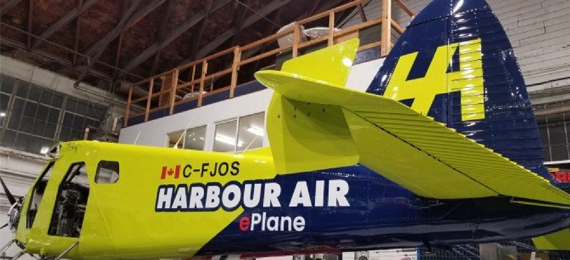
Are electric-powered airplanes the future? The Wright brothers may have invented the airplanes but we have come a long way from the initial models to F-35 Lighting Ⅱ at present but one thing remained the same, ‘Fuel’. Yes, from the era of the first planes up until now, aviation turbine fuel (ATF) didn’t change.
Though electric-powered helicopters have been in the system since the ’70s, any crewed-flight powered by electricity are just prototypes. The aviation era, the jet era, and now we are stepping into the electric era. Let’s see about the Airplanes of the future.
Electric Powered Airplane
The first-ever electric-powered airplane was actually a modified Cessna Caravan 208B by Harbour Air and MagniX. The 6 seater seaplane flew over Vancouver, Canada. The DHC-2 de Havilland Beaver electric aircraft engine consists of a magni500 propulsion system and has a 560Kw battery (750 Horsepower). It cruised the air for around less than an hour. The said aircraft can fly 160km on a single charge and Harbor AIr has decided to convert its entire fleet to battery power.
How Will Electric Planes Work?
- A. Lithium Batteries
- B. Hydrogen Batteries
- C. Cable Wires
- D. All of the Above
Electric Airplane Motor
The US tested the largest electric aircraft, ‘e-Caravan’ on May 28, 2019. It could hold 9 passengers recently. It flew over the Grand County International Airport for around 30 minutes. The ACCEL plane was remodeledAirbus A380 by Magnix and AeroTEC. Airbus and Rolls Royce have also partnered to manufacture electric airplane motors since 2018. Yet they are unsure whether these planes will be commercially available within the next 50 years.
Advantages of Battery-Powered Airplanes
MagniX CEO Roei Ganzarski stated that it would cost only $6 for flying on an eCaravan while the same journey on a fuelled flight would cost around $300-400. The aviation industry contributes 3% of the world’s carbon emissions and this will make up to 24% by 2050, battery-powered airplanes can cut carbon emissions drastically. Hybrid aircraft that are both fuel and electric powered provide fool-proof ways to travel.
Riona Armesmith, the chief project engineer for hybrid-electric propulsion at Rolls-Royce, informed that the advantages of electric propulsion in comparison to its cost of production and disadvantages make it less desirable for the aviation industry. Thus, companies are researching ergonomic ways to produce electric engines.
Disadvantages of Electric-Powered Aircrafts
Fossil fuels are considered 14 times better than battery alternatives because fuel fits in the wing but batteries consume 30 times more space. On the other hand, dead batteries have the same weight as a fully charged one while fuel will reduce the overall weight of the plane which in turn results in less consumption and more time on air.
An average Airbus A380 could fly 15,000kms on fuel but only 1,000km on fuel. Thus, electric-powered aircraft should be small to harness maximum power. Small planes mean multiple trips and increased costs in terms of manpower.